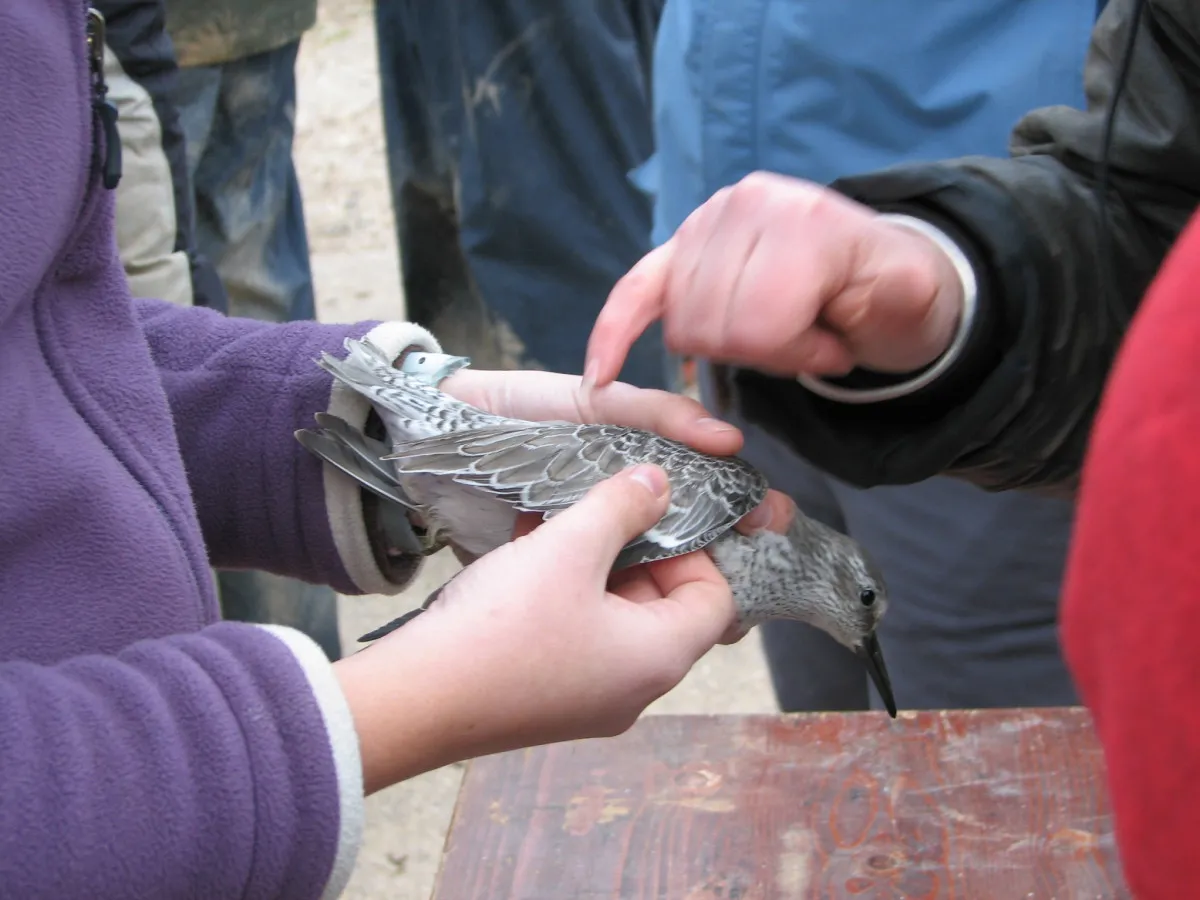Citation

Overview
When ringing birds it is usually important to standardise measurements so that sources of error are minimised. For example, trainee ringers are taught how to measure wing lengths in the most repeatable fashion. Measuring bird weight is usually much more straightforward. One situation where this may not be the case is during canon netting when large numbers of birds can be caught at once, but are weighed gradually as the birds are processed, potentially leading to biases.
In more detail
This paper examines this phenomenon using captures of Knot, Turnstone, Dunlin and Semipalmated Sandpiper in Delaware Bay, USA. As these waders were caught whilst actively feeding on the eggs of Horseshoe Crabs, there was the possibility that birds weighed first could be heavier due to having a gut full of eggs, whilst those weighed last may have digested/voided their gut contents prior to being weighed and so weigh relatively less. For sample bird catches birds were weighed repeatedly, from immediately after capture to up to four hours after capture.
The study found that birds rapidly lost up to 5% of their body weight in the first 30 minutes, with weight loss much reduced thereafter. This weight loss was strongly correlated to the number of droppings birds produced in the keeping pens, indicating the reduction was related to processing of gut contents. The paper shows how body weights can be standardised to that expected if each bird was weighed at 30 minutes after capture. For large catches this can increase the apparent mean weight for the sample by up to 2%. The paper also discusses the situations in which standardising body weight measurements for time from capture may be necessary.
Abstract
Shorebirds are often caught in large samples and kept in temporary captivity for differing lengths of time before being banded, measured, weighed and released. As birds in temporary captivity lose mass as they digest their food and void their guts, those weighed first may have a higher relative mass than those weighed last, which can affect the mean recorded mass of a large catch. We recorded multiple mass measurements of individual shorebirds of four species Red Knot Calidris canutus (mean mass 148 g), Ruddy Turnstone Arenaria interpres (135 g), Dunlin C. alpina (64 g) and Semipalmated Sandpiper C. pusilla (29 g), caught in a series of catches on Delaware Bay, USA during spring passage. We modelled the rate of mass loss to provide a correction factor allowing individuals to be compared across catches and the mean mass of all birds in different catches to be compared. As birds caught in cannon-nets are rarely measured until at least 30 minutes after capture, masses were predicted for this time, thus reducing the size of the correction required. Time since capture was the most important predictor of mass loss. The mean defecation rate (number of droppings per bird per minute) was closely related to mass loss. Correction of mass for a catch of 372 Red Knot changed the mean mass of the birds in the catch from 147.8 g to 151.0 g, a difference of 3.2 g or 2%, although this was not significantly different from zero. To compare mass between catches, or to estimate fitness for departure, researchers should consider whether mass should be corrected to a standard time, taking account of local conditions such as when the birds last fed, the time since capture at which the first birds are weighed, and the maximum time between first and last weighing.
This work was funded by Delaware Department of Natural Resources and Environmental Control through a series of contracts over the years 2001–03.

